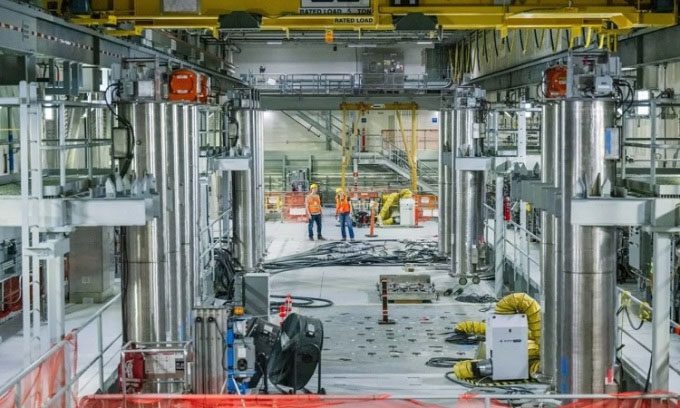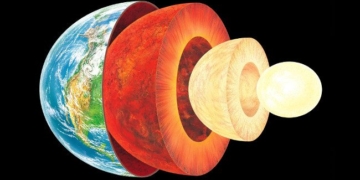The World’s Largest Radioactive Waste Melter Reaches Planned Operating Temperature of 1,150 Degrees Celsius in Second Test Run.
The first melter designed to process waste at the Hanford Nuclear Reservation in Eastern Washington is expected to maintain this temperature for several days during its second test run. Following this, glass frit will be added as the next step in the melter testing process. According to Ed Dawson, spokesperson for the U.S. Department of Energy, completing the heating of the first melter is a significant milestone for waste processing at Hanford, as reported by Yahoo on July 25.

Workers at Hanford stand near the first melter. (Photo: Yahoo).
The melter will operate continuously for five years. The construction of the vitrification plant began 21 years ago. The plant is scheduled to start processing the least radioactive waste from underground storage tanks at Hanford in late 2024 or 2025, converting it into a stable glass form for disposal.
The underground tanks at Hanford contain 212 million liters of radioactive and toxic chemical waste from the production of nearly two-thirds of the plutonium used in the U.S. nuclear weapons program during World War II and the Cold War. Bechtel National, the contractor responsible for building and delivering the vitrification plant to the U.S. Department of Energy, aimed to heat the first 300 tons of the melter on October 8, 2022.
However, the heating process had to be stopped shortly after midnight on October 10, 2022, with a temperature of only about 150 degrees Celsius due to an electrical supply issue with the melter’s starting equipment. Engineers had to review the entire system to understand the root cause of the problem, meticulously examining all components of the melter and redesigning some parts. They also purchased, tested, and installed several new pieces of equipment. The second test run commenced, and the melter reached a temperature of 1,150 degrees Celsius on the afternoon of July 20.
After adding the glass frit to the melter, a second heating unit will be activated to replace the starting equipment. This will allow electricity to flow through the molten glass tank. Subsequently, an air sparging system will be installed to inject air into the bottom of the glass tank, preventing hot spots from forming. The melter, measuring 6 x 9 meters and standing 4.6 meters tall, is five times larger than the melter currently operating at the Defense Waste Processing Facility at the Savannah River Site of the Department of Energy in South Carolina.
The heating tests will prepare for the next phase of the handover process, which involves testing the melter with non-radioactive materials to simulate waste. A federal court has mandated that the Department of Energy begin vitrifying high-level radioactive waste by 2033.


















































